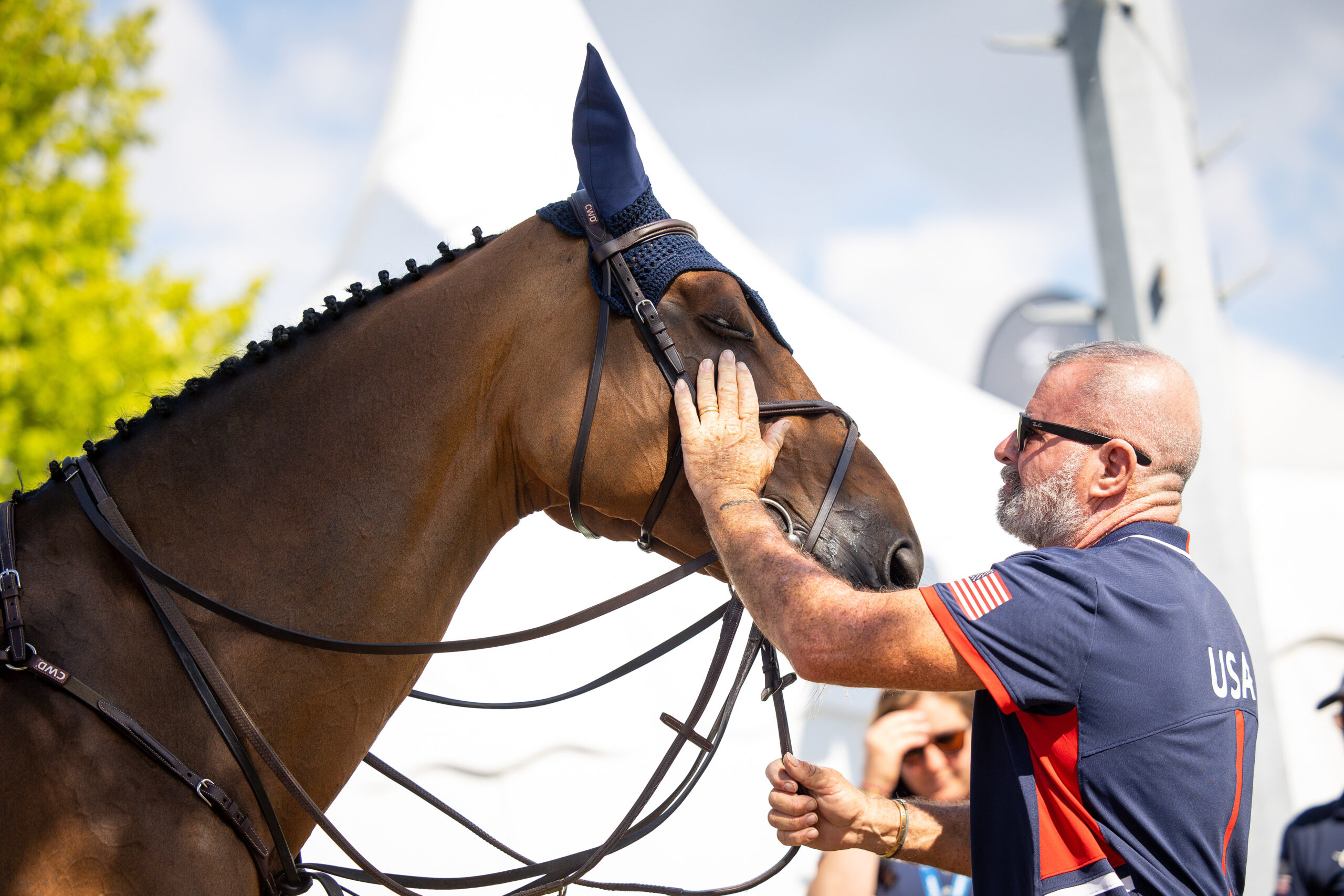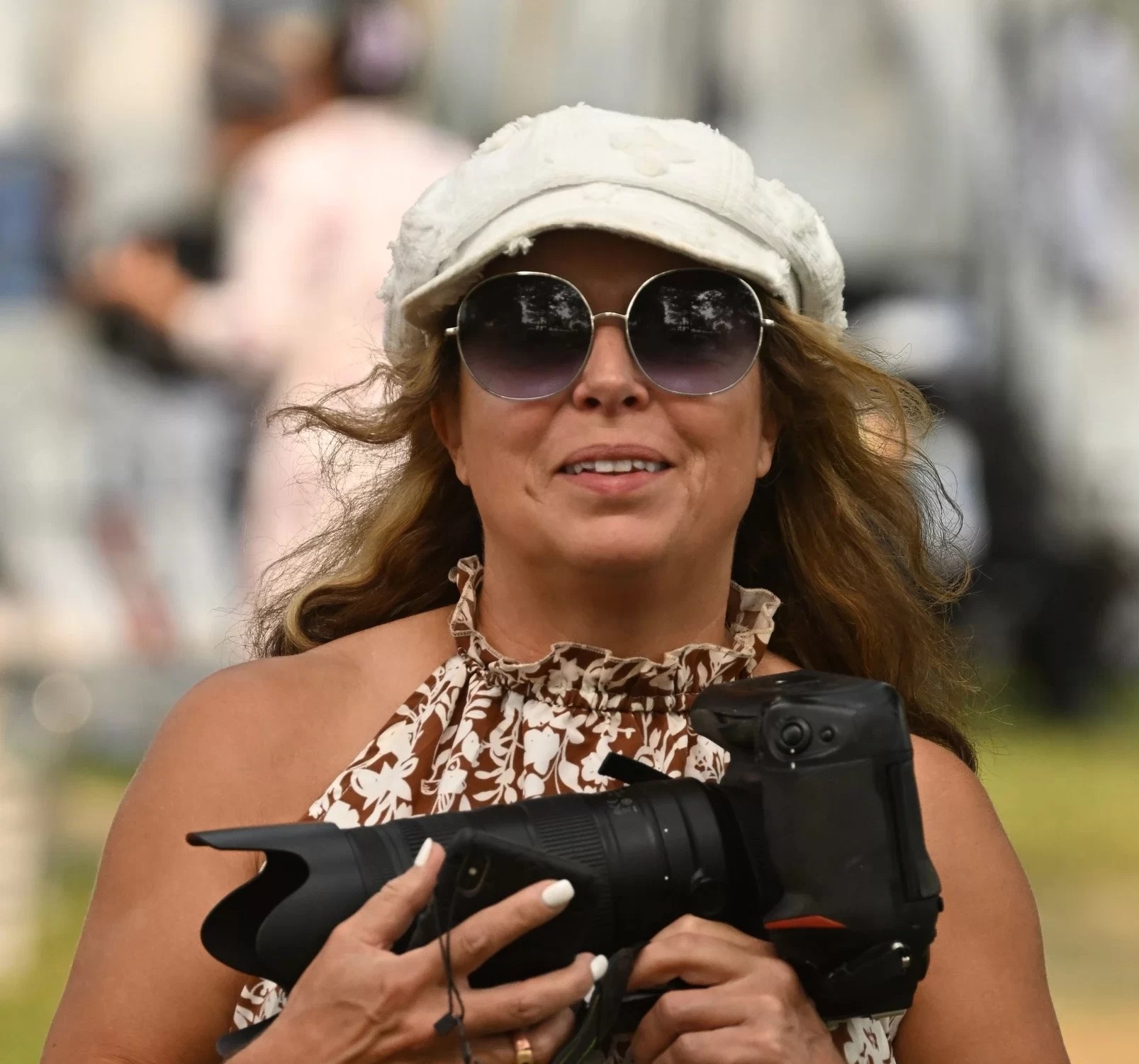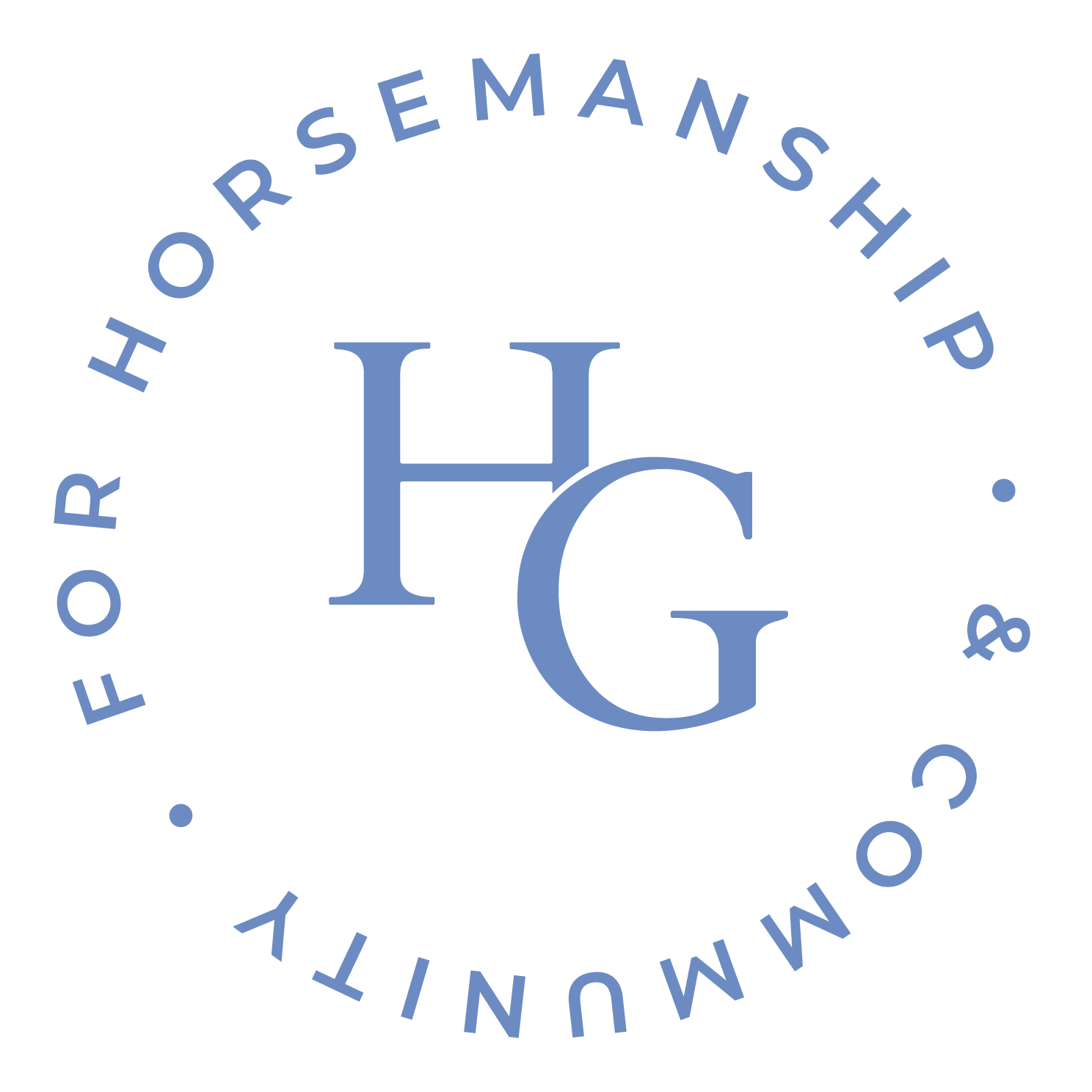In 1988, Lee McKeever traveled across the pond from Ireland to work for McLain Ward’s father Barney Ward for a year. But then he never left; that year spanned an additional three and a half decades with McLain working as his manager. Thirty-six years later, his horsemanship in overseeing McLain’s grooms and horses is based on experience combined with the notion that the fundamentals never change.
Going In Circles
“What I’ve noticed recently is that over time, everything in this industry goes around in circles,” McKeever said. “It’s like things that were very popular 20 years ago disappear, and then all of a sudden, they’re back in a new manner or form. I think everything keeps going in circles. It’s like fashion; it all comes back eventually. But we stay with what we know. And if something interesting comes along, we’ll try it – and if the horses like it, we’ll go with that.”
Every Horse Is Different
The “if the horses like it” declaration is also at the root of McKeever’s philosophy. Every horse is different, and they are treated accordingly.
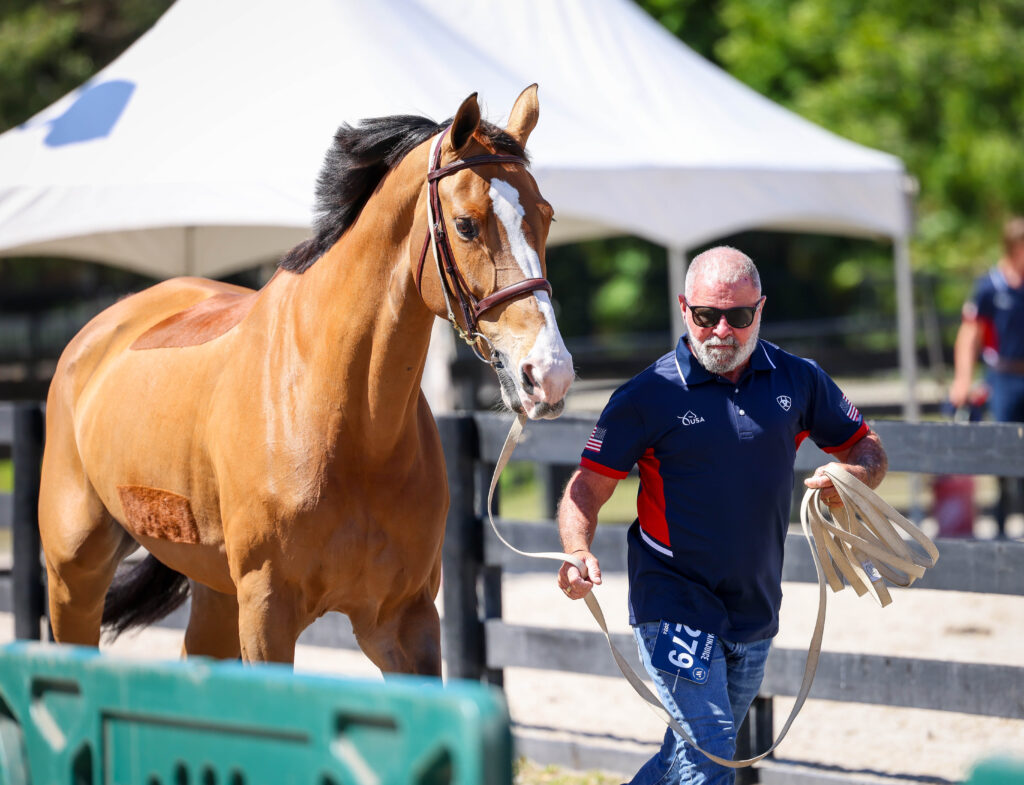
In an operation built around one of America’s most successful show jumpers of all time – McLain is a two-time Olympic gold medalist, an FEI World Equestrian Games gold medalist, an FEI World Cup Final winner and is set to represent the USA in Paris this year – horses come and go. It is the nature of the game. When a new horse arrives, McKeever sets out to get to know their nuances, and that takes patience.
“We normally feel them around for a little bit and see their temperament, their attitude – likes and dislikes – do they like to turnout; do they like other horses; what do they like to eat and so on,” he said. “I think it’s probably a good three to four months before you really know them in depth.”
Daily Routine
Each groom has four horses in their care, and the day begins with the first of two daily feeds at 7 a.m. In traditional grooming style, the grooms muck out their horses’ stalls. “A lot of people have a muck service that comes in, or one person that mucks the whole barn – that’s a lot different from Europe, and it depends on what business you are in,” Lee said. “But we always feel that mucking out is a big part of finding out what’s going on first thing in the morning with a horse – see how their legs look, how they’re acting, did they eat all their grain? I think that’s a big part of the daily routine – knowing what’s going on with your horse.”
Feeding Routine
The feed regimen is strict, although the diets vary. Hay and grain is fed twice a day – at 7 a.m. and 4 p.m. – with hay in the middle of the day to keep them “ticking over until dinner time,” McKeever said.
“We’re not big hay people because we find it puts a lot of bulk belly weight on them, so we feed a lot of chaff.” Night check involves a late-night snack of four or five carrots.
Trying to Nail the Balance
McKeever feeds a lot of supplements and works out which ones and for which horses himself – with the help of regular blood work on each horse – to gauge whether the balance is right.
“All our horses are on different supplements,” he said. “I figure out the temperaments, what they’re doing, where they are in the sport, what they’re lacking. And we do blood work every so often to see if some need more of one than another. Some of them, when they’re a little anemic, that will show up in their blood – a lot get vitamin E deficiency, which we can fix with supplements.”
Getting Them Into Their Best Athletic Shape And Form
Feed is also customized for each horse to reflect its workload, temperament, and physiological traits.
“Every horse is different,” McKeever said. “If one’s a little hotter, they’ll get less sugar in their grain. And if you want one with a little more muscle, they get more protein. The whole thing is trying to get them into their best athletic shape and form.”
Shoeing Consistency
Shoeing consistency is assured by having the same farrier for almost as long as McKeever has been working there. “We’ve had the same farrier for like 35 years,” McKeever said. “So he knows what he’s doing, and he knows what we like. But if we have a problem with a horse, then we’ll sit down and discuss it with him, and he’ll give us his ideas about what’s best for that horse, and then we’ll go from there.”
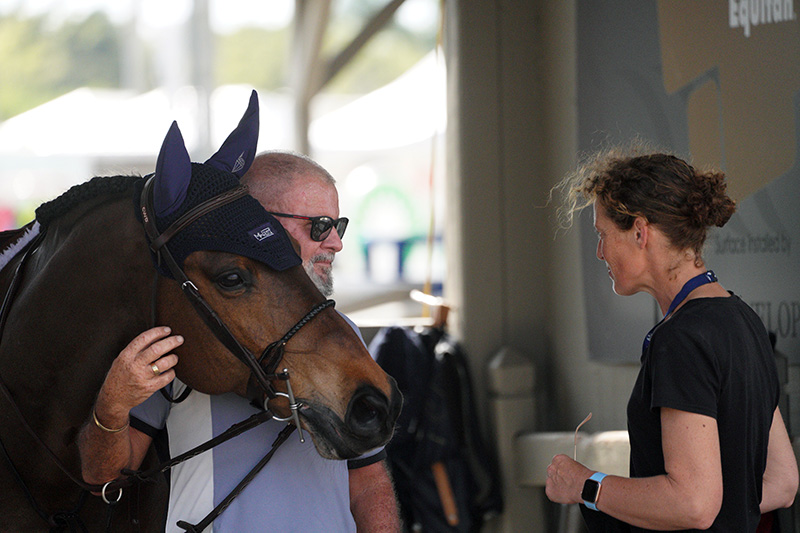
Physical Therapy
In addition, McKeever adds some physical therapy to the mix. “We use a magnetic blanket, and a chiropractor meets us at the shows to do muscle and body work, which I think is very beneficial. The horses like it a lot,” he said.
Workload
Once breakfast is over for both the horses and the team, it is time to determine the workload for each horse
“McLain will sort out who’s going to ride who – if they’re flatting, jumping – and then we figure out who’s going to be on the walker and who’s turning out. It totally depends on the show schedule too,” said McKeever.
Turnout; Good for the Brain
“Most of ours turnout. I think it’s very good for their brain, and it relaxes them.”
There have been some horses with their own special quirks – notably Catoki, the diminutive speed merchant, who is rarely ridden between shows. And then there has been the occasional escapologist.
“There’s been one or two that have jumped out of the field – especially when they come from Europe, and we turn them out for the first time, they’ve jumped out,” Lee recalled. “But for that, we have a pen with a big, big fence. It is good for their minds for them to go out.”
Life On The Road
Aside from the first three months of the year, when the Winter Equestrian Festival in Wellington, Florida, is the main focus, much of the rest of the year means traveling consistently.
“Normally, when we’re home, we’re traveling every week to some show – either in the U.S. or abroad. Then there’s three or four weeks in the middle where we have home time,” McKeever said. “There’s a horse show every week if you want to go. There are more and more horse shows. More than ever, I think.”
Working Backwards From The Olympics
This year the schedule has been built around the Paris Olympics – the sixth Games for McKeever and McLain.
“We work backwards from the Olympics [to] which shows we are going to go to, and then when the horse is going to peak, the shoeing, the veterinarian, everything is a plan. And hopefully it all comes together and goes well when you get to the venue,” said McKeever.
“McLain does the schedule and sits down at the start of the year or before and figures out where he wants to go and puts where we’re going to peak that horse. If there’s a championship, that’s where that horse is going to peak.”
Up in the Air
Taking horses on the road or in the air has its own set of challenges, and today, horses are more accustomed to clocking up air miles than road trips.
“These horses fly so much – they are used to flying more than driving,” said McKeever. Preparation includes an IV of fluids before the flight to ensure they stay hydrated since some horses do not like to drink water on the plane. They are also given a bran mash mid-flight consisting of electrolytes, bran, sweet feed, vitamin E, and Selenium to help ensure their muscles don’t tighten up.

“You kind of get to know them when they come off the plane to see how they are feeling,” said McKeever. “They brace themselves when they’re flying, and they’ll stand pretty rigid behind. And they sit back on their rumps during take-off and landing.”
The Variables
At the end of the day McKeever’s job means planning for every eventuality and hoping that planning will limit the number of variables. That means paying attention to health and safety at all times.
“Health and safety are very important. It’s a combination of both,” he said. “Horses are living animals, and they have their own mind. You’ve just got to be prepared for everything. If you do your homework and you’ve prepared correctly, things should go to plan, but not always. You’ve got to allow for that and plan at the same time – you always need a plan B.”
Building Rapport
McLain’s grooms are allocated horses and stay with those horses to ensure they bond and have a rapport. As jobs go, it is one of the most sought-after postings in the show jumping world, and there is a reason why those selected are the chosen few. Like running any business, the team involved sets the tone for everything and, in this case, determines the likelihood of success in the show ring.
Loyalty
“I think loyalty is very important,” said McKeever, when it comes to the qualities he would look for in a groom. “They’ve got to really enjoy the horses because, at the end of the day, it’s all about the horse,” he continued. “They’ve got to be a very good team player, and the hours are a little strange sometimes, so they’ve got to be enthusiastic and in a good mood.”
A Focus On The Basics, An Eye On New Developments
Thirty-six years in any job is impressive, and with the experience he has under his belt, McKeever keeps a focus on the basics with an eye on any new developments in horsemanship.
“The fundamentals are the same,” he said. “That’s why everything keeps coming back around. It’s the same ideas. But I think you’re always learning with horses – every day, you’re finding new things.”
Lead photo courtesy of Taylor Pence/US Equestrian.
